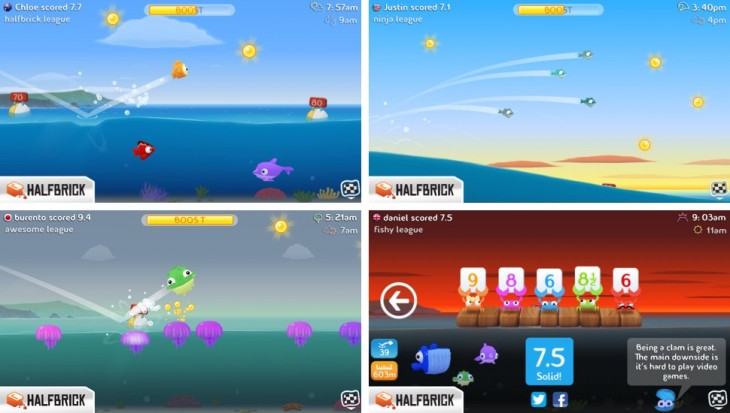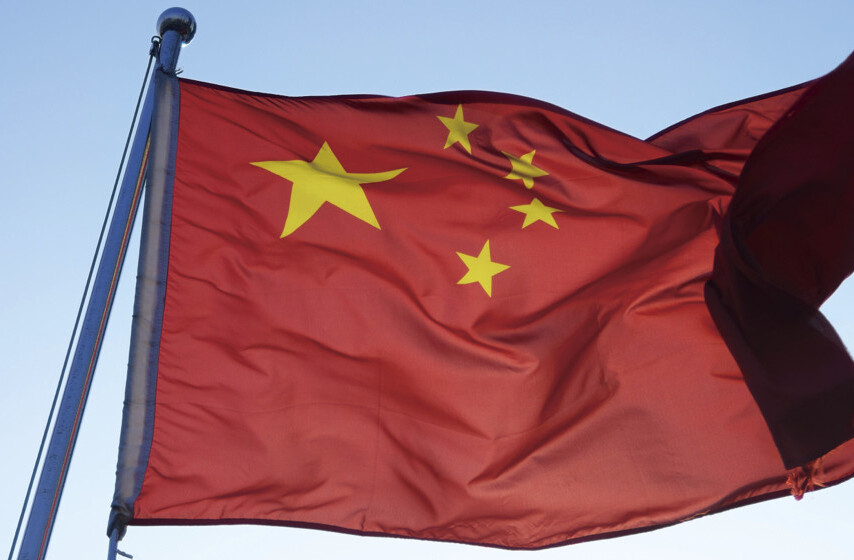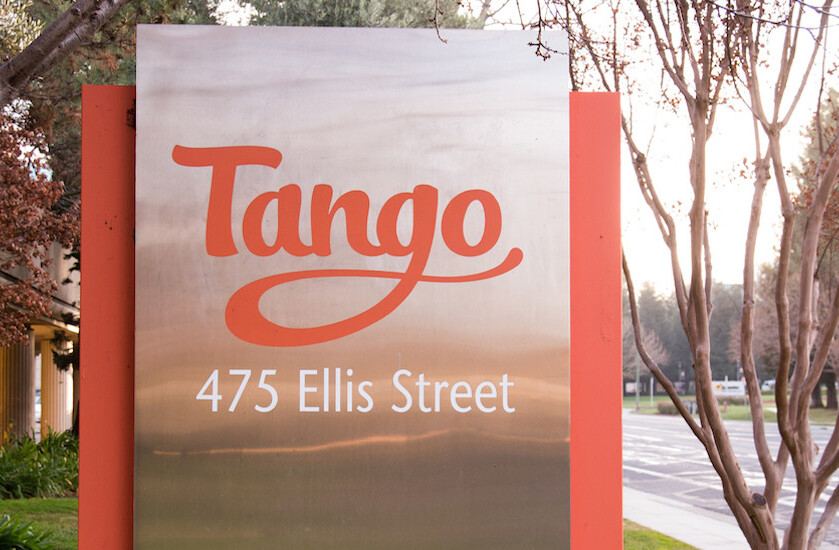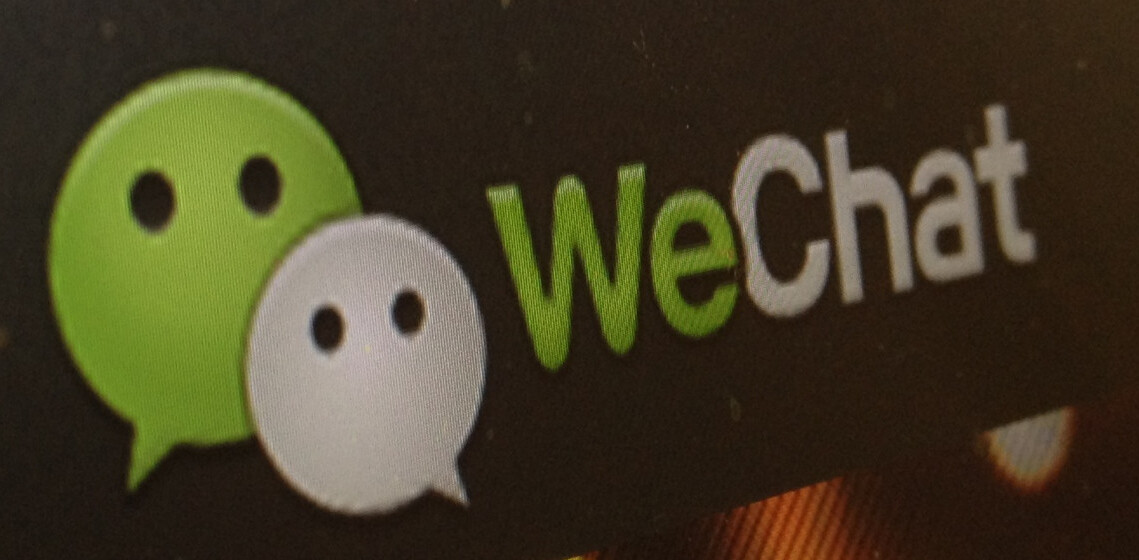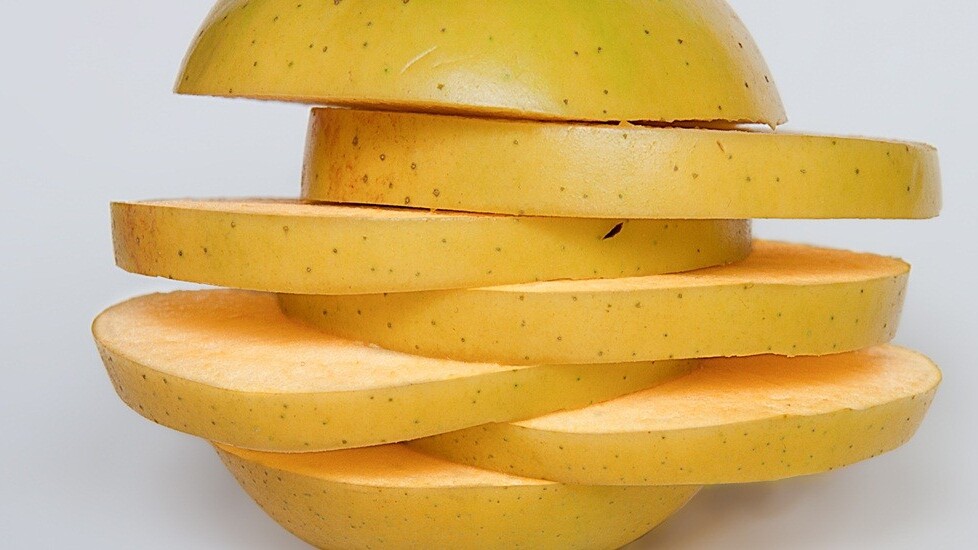
Halfbrick’s two mobile gaming hits, Fruit Ninja and Jetpack Joyride, are, by all accounts, established rockstars of the mobile gaming world. The company added its third title — Fish Out of Water — last month, and early signs suggest it may have another runaway success on its hands once it launches on Android and in the Chinese market.
In an interview at the Global Mobile Internet Conference (GMIC) in Beijing, Halfbrick CMO Phil Larsen tells TNW that Fruit Ninja has been downloaded at least 500 million times to date, with more than 120 million of that figure coming from China alone. iDreamSky is Halfbrick’s distribution partner in the country, and its co-founder, Jeff Lyndon, says localization of the game to China has been key to keeping it relevant to Chinese users.
Across its network, Larsen says that the company has racked up between 650 million and 700 million downloads to date — Jetpack Joyride has amassed more than 150 million — of which China accounts for at least 30 percent (if not more) of the total. That’s hugely significant and is testament to the potential that the market has for overseas firms, not only domestic games makers.
Fish Out of Water crests 300,000 downloads
With game mechanics powered by Jetpack Joyride’s engine, Fish Out of Water is showing good progress just one month after launch. First released for iOS and priced at $0.99, the app reached the iTunes top 10 charts in 65 countries, and so far has accrued more than 300,000 downloads.
For those of you that haven’t checked out the app yet, the gameplay is deliberately simple. Drag your finger to pick up a fish from the ocean and swipe to fling it and see how far it’ll skip.
Each fish is equipped with a unique skill. For example, a dolphin dips under water to avoid being slowed down by torrential weather. A group of fish called ‘The Brothers’ will break off into five different fish, and the furthest one away will be scored. Three attempts collectively make up your score.
While building Fish Out of Water, Larsen says that Halfbrick learned a thing or two from Jetpack Joyride. The game was Halfbrick’s first successful trial at a content-oriented game, and it allowed players buy additional items, including vanity jetpacks and game changing power-ups.
Fish Out of Water is a step up from its predecessor. From the ground-up the game is filled with content that Halfbrick could easily change or vary once the update is live. That means more opportunities to develop functional, behavioral and visual content that can be monetized, while narrowing in on cultural demographics. For instance, Halfbrick might replace the dolphin with crabs in the Chinese version, while it could also enable interchangeable game backgrounds, or provide the option to change the weather for a premium fee.
Larsen says that Fish Out of Water will come to Google Play within the next three months. The Android app launch will be accompanied by an update to the iOS — bringing parity to both platforms — and, importantly, the games’ official launch in China.
A Halfbrick theme park? Not any time soon.
Rovio’s knockout hit, Angry Birds, has spawned Angry Birds plushies, candy, theme parks, with its influence reaching all the way to China where you’ll find knock-off Angry Birds merchandise. Its intellectual property revenue (merchandising) isn’t negligible, raking in 45 percent of Rovio’s total revenue.
Understandably, Halfbrick wants to get into merchandising too, and Larsen says that all it would take is a phone call to secure a million dollar deal. While he admits that Halfbrick is looking at its long term strategy, Larsen says that he doesn’t want to burn fans out by rushing Fruit Ninja and Jetpack merchandise to the real world.
But to be clear, it’s not always about making a quick buck. “Merchandising is a byproduct,” Larsen clarifies, explaining that the studio isn’t about to create games for the sake of making cuddly toys or other physical product.
A major update coming to Fruit Ninja
Halfbrick is working on shaking things up with its oldest, most recognized title, Fruit Ninja. Larsen hints at the introduction of a significant new update, one that fans would agree is a long-time overdue. While he declined to divulge specific details since “the team is still prototyping the update”, he says that the core mechanic — cutting fruit — won’t change but gamers will find themselves inside a theme-oriented Fruit Ninja ‘universe’.
Think of a universe as a storyline, theme, and central characters that’s bound to freshen up the three-year-old game. To get a better idea of what’s in store, you might want to look at the Fruit Ninja comic that was announced last month in a partnership with Titan Comics. That’ll provide a glimpse into the changes that Halfbrick has in mind for Fruit Ninja, Larsen says.
From the looks of it, the universe-revamp will play well into Halfbrick’s foray into merchandising.

Localizing Fruit Ninja in China
Speaking on behalf of Halfbrick’s China efforts, iDreamSky’s Lyndon says there are some stark differences between game interactions in the west and east.
For starters, Fruit Ninja’s current design is an issue in China. It isn’t in-your-face enough, and doesn’t scream “buy something,” which is a problem since Chinese users tend to ignore the in-game shop button. Halfbrick and iDreamSky are tackling the issue to ramp up Fruit Ninja’s monetization capability.
Then there’s the matter of giving users what they want, at the risk of changing (or ruining) the gameplay. Chinese users tend to be more vocal with their suggestions or demands, which in this case includes local content like Chinese-style blades, and even fruity explosions on-screen with every swipe.
Halfbrick and iDreamSky are, like all firms, keen to hear feedback and suggestions from their users, and have gone through a series of initiatives aimed at improving communications with Chinese gamers.
iDreamSky has tapped into China’s social media spaces to help strengthen its links with fans. The company is using Sina Weibo — the Twitter-like service with more than 500 million registered users — to track suggestions and feedback. Users that tag the iDreamSky account or add a Fruit Ninja hashtag in their comments will have their suggestions looked at by the team.
Any users whose feedback which ends up being incorporated into the game will be rewarded with their name (and profile picture) added to the credits — giving fans a real incentive to get in touch with quality thoughts.
Read other stories from GMIC 2013 here.
Headline image via pj_vanf / Flickr
Get the TNW newsletter
Get the most important tech news in your inbox each week.
